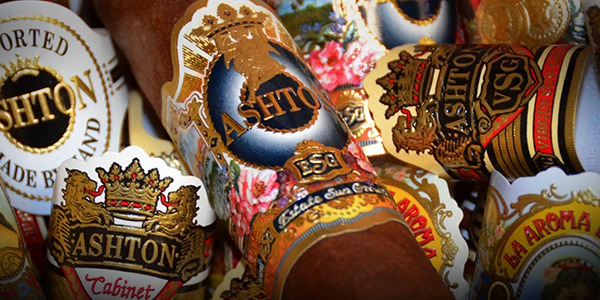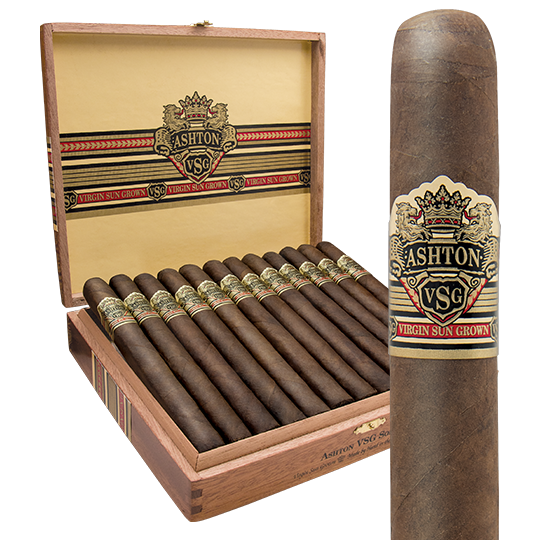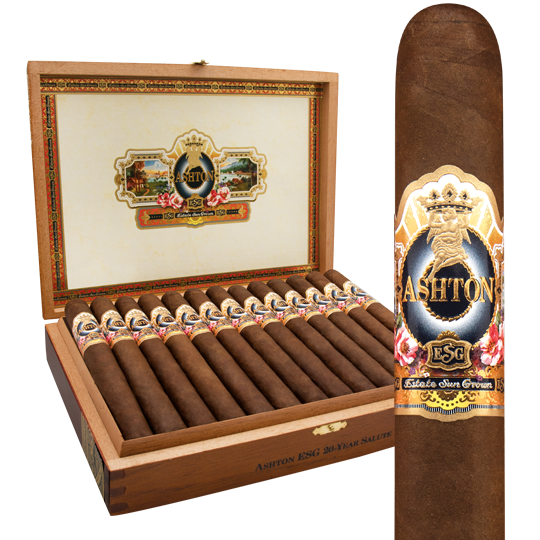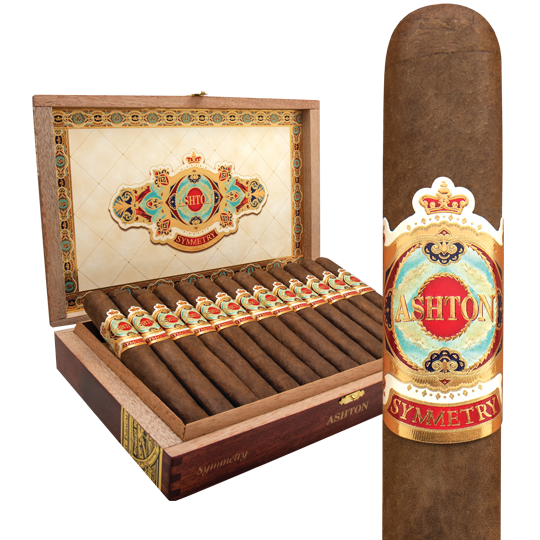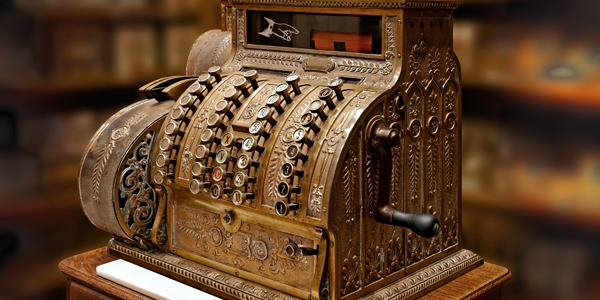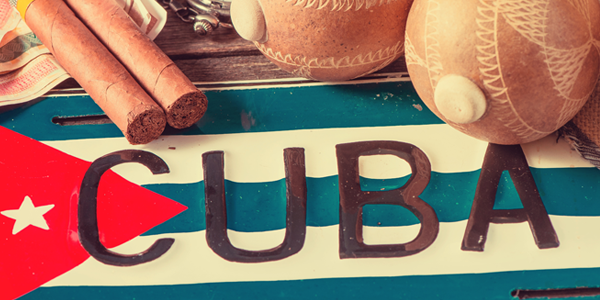The History of Cigar Bands
Cigar lovers routinely debate what to do with cigar bands. Leave it on? Take it off? That might be as much as you’ve ever thought about that little, or not-so-little-anymore, ring of paper on your cigar. We’ll get to that boiling controversy, but there’s a lot more to the cigar band than meets the eye. And you never even knew you wanted to know!
History of Cigar Bands
Legend has it that the cigar band was created to accommodate Catherine the Great, the empress of Russia in the late 18th century. Rumor dictates that her majesty didn’t want to sully her fingers with residue from her cigars, but there’s not any reliable historical evidence that ol’ Cathy, who reportedly bathed once a month, cared much about hygiene or was ever a smoker.
Another unsupported tale from a century later reveals a concern among the British that cigars would stain the fashionable white gloves they wore during the era. Doubts are cast on this story also by the fact that snuff and pipe tobacco were far more popular than cigars at the time. The best explanation of how cigar bands came to be is revealed by cigar historian Tony Hyman.
Cigars were just becoming popular in Europe in the 1800s and Cuban cigars were considered the best. Germany, which produced most of the non-Cuban supply, made cigars that cost about a penny each. Despite the low price, Hyman has written, the public clamored for cigars from Havana that cost 15 times that. This apparently led to fraud. Some German manufacturers made cigars and passed them off as Cubans. This practice was so rampant that the owner of Cabañas cigars in Cuba, a brand that lasted into the middle of the 20th century, figured that “for every one of the 2 million Cuban cigars I ship to Europe, 6 million are being sold there.”
As it turns out, it was a German who is credited by the Cubans for inventing the modern-day cigar band. Gustave Bock was an immigrant to Cuba who owned a cigar factory. In the 1830s, Bock, seeking to protect his brand, placed a paper ring with his signature on each of his cigars for export. That way, the thinking went, people would know that what they were smoking was authentic. By 1855, nearly every Cuban export brand carried a cigar band. The bands were registered with the government. Advertising urged consumers to buy only banded cigars.
By 1900, nearly 80 percent of American men are estimated to have smoked cigars. Cigar bands became an eye-catching addition to even relatively inexpensive domestic cigars. Bands were relatively inexpensive then as well, so even the cheapest stogie could be ringed. A lot of cigars had similar looking bands, since the manufacturers were ordering them from the same catalogs.
Collecting Cigar Bands
As bands became more prevalent, they became more colorful, and collecting cigar bands became popular. In this ‘golden age’ of cigar-band art, cigar vendors would give away albums to collectors so they could mount the bands. Cigar companies sold complete sets. One cigar company even used the bands like trading stamps and gave away merchandise like silverware and even bedroom sets. As the world economy turned sour, leading to the Great Depression (1929-1939), cigar sales plummeted and so did interest in cigar bands. The hobby of collecting is more of a thing in Europe today than it is in the U.S.
We can thank cigar bands for giving us the word ‘vitola’ (cigar band collecting is known as ‘vitolphilia’), the word originally used in Spain for the bands themselves. Vitola has now become a term used to refer to the shape of a cigar. Many cigar bands today certainly retain a high level of artistry with the goal of attracting the interest of the buyer. Just look at ornate designs like that of the band on the Fuente Fuente Opus X to get a sense of the pride taken in the art. Bright colors, lots of red and gold, and family crests have been prevalent in many designs and still are seen on a number of iconic bands.
Cigar Band Art
Present-day cigar band printer Vrijdag, based in the Netherlands, is a company regarded for producing many of the most intricate and vivid bands on the market today, including Opus X. One look at the opulent embossing on a San Cristobal cigar band is unmistakably the work of Vrijdag, as the brand’s emblematic parrot practically lifts off and into the room against the scenic tropical backdrop depicted in the artwork. The bands on an Ashton VSG, Ashton Symmetry, and Ashton ESG seamlessly communicate prestige, quality, and pride. Vrijdag is responsible for today’s most impressive cigar bands.
The powerful and prominent branding on cigar bands is responsible for the ubiquity of brands like Macanudo, Romeo y Julieta, and Montecristo, in many ways, as much as the flavor and aroma the cigars deliver. Distinct traditions can also be perceived between Cuban and non-Cuban cigar brands. Some, like the brown band on the classic Cuban Montecristo remain pretty much the same, while other non-Cuban releases have evolved with more color and detail. Padron has used the cigar band to distinguish its different lines. The original is brown, with an outline of the island of Cuba. The 1964 Anniversary displays more gold while the 1926 Series used the same color scheme, but morphed into a slightly shorter, wider format. New colors are beginning to show up. La Flor Dominicana Andalusian Bull (the Cigar Aficionado ‘Cigar of the Year’ in 2016) emphasizes green with a silhouette of a matador in black with the company’s ‘LFD’ initials in the bullfighter’s cape. Of course, the writing is in gold.
Purpose of Cigar Bands
One of the most important purposes of a cigar band is communicating authenticity. That now includes combatting counterfeiting. To discourage fakes, Padron places an additional numbered band under the top band with the name, making it, one hopes, harder to duplicate. Other technologies are used on bands to discourage counterfeits. Cohiba, perhaps the most knocked-off Cuban cigar, has constantly updated its bands. Many bands themselves now might be nearly as big as the cigars they’re identifying. Look at the Camacho lines to get a sense of how some manufacturers brand their bands. Does a cigar band stretch too far in this case for the purpose of jumping off the shelf in a store? The cigar is easily going to burn to the band before you’re done puffing it. So, is that when you remove the band? Or do you do it right at the start?
Should You Remove the Cigar Band?
Perhaps no one has addressed the conundrum better than the late Cuban writer Guillermo Cabrera Infante. He wrote in ‘Holy Smoke,’ his often-hilarious ode to cigars, “The band, though placed around a cigar last, must always come off first, no matter what bogus connoisseurs might tell you.” Later in the book, he added, “On the other hand you can leave the band if you want to advertise what you smoke, but on the other hand, if you don't want to appear too nouveau riche, you can strike off the band -- and throw it away.”
If you do remove the band, it’s safest to wait until you’ve had a few puffs of the cigar. This will allow smoke to travel the length of the cigar and slightly heat up the adhesive that holds the band in place. Usually, as a result, you get less resistance for an easier removal. We don’t suggest that you try to slide the band off unless it’s already very loose. Why risk tearing the wrapper? If you do want to slide the band off, it’s best to do so with a Figurado, where the tapered head will allow for a seamless shedding of the label.
While bands are certainly an integral part of the cigar experience, we don’t advocate choosing your cigar based on what the band looks like over its taste. To the contrary, we’ve grown fonder of the bands on the cigars we love because our attraction to their flavor, aroma, and consistency is enhanced by our trust in an iconic insignia. In an era of instant gratification, distraction, and smartphones, we recommend snapping a photo of the cigars you enjoy with their bands intact, as well as those you may find less pleasing, as a valuable record to consult when making future cigar purchases. One practical benefit of knowing your brand by its band, you can more easily spot your favorite cigars on the shelves of cigar store humidors. And that’s always an advantage as you develop a palate for fine cigars.

